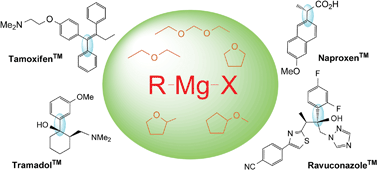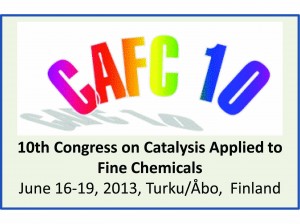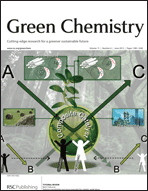The 17th Annual Green Chemistry & Engineering Conference was held June 18–20, 2013 in Bethesda, Maryland, USA. The theme of the conference, which was organized by the ACS Green Chemistry Institute, was “Sustainable Chemistry & Engineering in the 21st Century”. The conference increased its attendance over last year, with almost 500 registrants. The conference offered 30 technical sessions, and 2 poster sessions, along with 3 keynote addresses. Lectures in the extensive program included those by Green Chemistry Editorial Board member Dr. Peter Dunn of Pfizer and Advisory Board members Dr. Rinus Broxterman of DSM, Dr. Michael Kopach of Eli Lilly and Company, and Professor Richard Wool of the University of Delaware.
The first keynote speaker was Milton Hearn of Monash University, who presented a talk entitled “Green Chemistry—Time for a Transition?” In his lecture, Professor Hearn highlighted how green chemistry tools are a crucial part of addressing global challenges such as increasing energy consumption and threats to the global food supply.
The second keynote speaker was Michael Pcolinski of BASF Corporation, who presented a lecture on “Creating Chemistry for a Sustainable Future”. Dr. Pcolinski spoke of BASF’s and the wider chemical industry’s efforts to increase the sustainability of their business activities. He described analysis tools developed at BASF to estimate the ecological efficiency, social impact, and sustainability of potential projects.
The third keynote speaker was James Hutchison of the University of Oregon, who presented a talk entitled “Greener Nanoscience: Advancing sustainable Solutions Through Molecular Level Design”. Professor Hutchison described efforts in his lab to create proactive approaches to reduce the hazards of and environmental exposure to nanomaterials. To address this goal, his lab is searching for ways to make the synthesis of nanoparticles greener, elucidate design principles for safer nanomaterials, and create nano-enabled products that may help reduce waste in consumer products. He also highlighted the development of methods to identify hazards early in the nanoparticle development process, work carried out in collaboration with Professor Robert Tanguay of Oregon State University. Professor Tanguay described this need in a recent Green Chemistry Review.
Among many other exciting topics, other broad themes of the conference included efforts in the chemical and pharmaceutical industries to make their activities more sustainable. For example, Dr. Leanna Shuster presented work at GSK on development of a guide to reduce the environmental impact of reagents used by their synthetic chemists, which was also recently presented in a Green Chemistry article (DOI: 10.1039/c3gc40225h). In addition, the effort to bring together the toxicology and green chemistry communities to design safer materials was also a hot topic. A session organized by Dr. Karen O’Brien of Advancing Green Chemistry and Dr. John Peterson Myers of Environmental Health Sciences included several speakers who are also authors on a recent Green Chemistry paper (DOI: 10.1039/c2gc35055f) describing TiPED, a tool for chemists that can identify molecules that may disrupt the endocrine system early in the chemical development process.
All in all, this year’s Green Chemistry & Engineering Conference was a great success, bringing together scientists from diverse backgrounds in industry, academia, government, and non-governmental organizations to address challenges of sustainability and environmental and health challenges in the 21st century and beyond.
By Jennifer Griffiths
See page 2 for Albert Matlack’s view on the Conference…




















